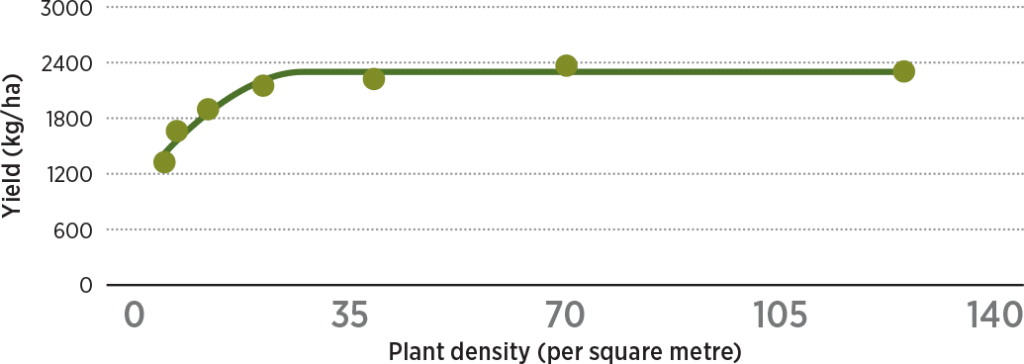Key Result
Reseeding is more likely to provide an economic benefit when the plant population is below 20 per square metre (two per square foot), when the timing is early June at the latest, and when growers reseed to the same or a similar hybrid.
Project Summary
Overview
While hybrid canola has a high degree of phenotypic plasticity that allows it to compensate for low plant populations, growers need to know when the population is likely too low to compensate for the reduced plant stand. Reseeding is more likely to provide an economic benefit when: the population is below 20 plants per square metre (two per square foot); the timing is early June at the latest; and growers reseed the same or a similar hybrid. While hybrid canola has a high degree of phenotypic plasticity that allows it to compensate for low plant populations, growers need to know when the population is likely too low to compensate for the reduced plant stand. Reseeding is more likely to provide an economic benefit when: the population is below 20 plants per square metre (two per square foot); the timing is early June at the latest; and growers reseed the same or a similar hybrid.
Objectives of this project were to determine: (1) the plant population at which canola hybrids yield 90 percent of maximum; (2) the effect of plant population on maturity, seed size and green seed; (3) the minimum plant density at which reseeding would be recommended for hybrid canola; and (4) the risks with each reseeding option in terms of maturity, yield and quality.

Field experiments were conducted at Indian Head, Melfort, Saskatoon, Scott and Swift Current, SK in 2010, 2011 and 2012.
Hybrid canola was seeded at rates of 5, 10, 20, 40, 80, 150 and 300 seeds per square metre. Two varieties of Brassica napus (5440LL and short season 9350RR) and one variety of Brassica rapa were reseeded into existing stands of low density canola in early and mid-June. Results were based on the actual stand that emerged, not on the seeding rates.
Results and recommendations
Objective 1. In this study, hybrid canola was found to achieve 90 percent of maximum yield at 18 plants per square metre or around two per square foot. Precipitation was not limiting in any site year, except for Melfort in 2011. Adequate moisture improves yield compensation at low plant densities.
Objective 2. With site years combined, the study found that a reduction in plant density from 70 plants per square metre to 21 plants increased the flowering period by six days and maturity by three days. Extended maturity also resulted in higher harvest green seed counts at lower plant density.
Objective 3. When faced with a plant stand of 20 plants per square metre or fewer, reseeding in early June to hybrid canola provides a yield and economic benefit compared to leaving the stand at low density. When faced with a low plant stand, reseeding to 5440LL in early June provided a yield benefit approximately half of the time. Reseeding to the shorter season 9350RR resulted in a significant yield increase in only three site years. Generally, reseeding in mid-June resulted in lower yield. This study found no advantage to reseeding with B. rapa, even when reseeding was postponed to mid-June. If conditions do not allow for reseeding to occur in late May or early June, reseeding to canola is not recommended.
Objective 4. When reseeding is required, reseed as early as possible to reduce the risk of poor stand establish-ment and yield and quality reductions due to fall frost.
Conclusion
Even when the Saskatchewan crop insurance establishment benefit is included in the reseeding calculations, the early May treatment seeded at a traditional rate of 150 seeds per square metre resulted in a net return of $219 and $276 per hectare greater than 5440LL and 9350RR seeded in early June, respectively.





